How To Set Up the Creation Processes
You may not be able to force creativity, but you can certainly invite it.
You may not be able to force creativity, but you can certainly invite it.
by Andreja Mahović / 15 7 2020
Everything starts with an idea. Now that you have figured out what you have at your disposal, it’s time to finally start creating things. This journey of creation is always the most exciting part for me. Seeing something grow from scratch, out of your mind, into a visual thing in front of your eyes is a unique experience every time.
Every idea is different and so is its further development into an asset. The more people contribute to the project and the further we go, the more complex and exciting it becomes. The way I broke things down for us internally, from the most simple to the most complex, and based on what content we produce and assets we sell is:
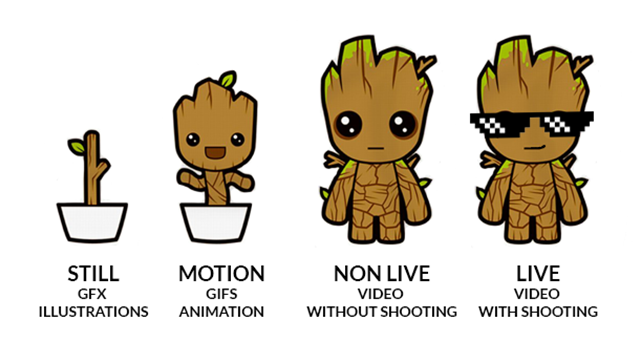
I will go into the strategy behind using this breakdown in one of the future blog posts. Right now I want to focus on the production and explain the way we categorize things.
STILL is essentially any content that ‘doesn’t move’ when put out on the screen or in the form of a physical product. It’s everything from a happy birthday post on socials (which has a special place in my heart, my team knows this) to a graphic announcing a big match or a big poster illustration which you can see in a New York subway.
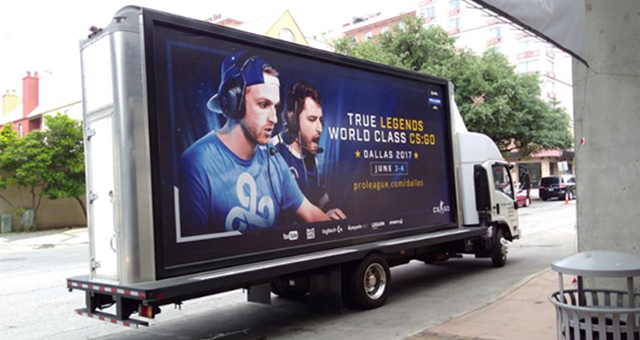
ESL Dallas 2017 promo poster. One of the examples of a STILL content in the form of a physical product.
MOTION includes any animated piece of GFX or illustration, motion elements like intros, outros or lower thirds but also 3D pieces that we put out in an animated form. I have to also mention, and this goes in line with the overlaps I talked about before, sometimes we will create still content out of the 3D environment. The poster we created for New York Subliners recently is a great example. We set the scenery up, added the actors and the Subliners logo and then rendered it and included in the poster.
Out of a similar environment, but with a different scenery & characters (and much longer deadline, thankfully), we also created the announcement for the opening match and NYSL’s entry into CDL 2020. This would be a perfect example of the difference between STILL & MOTION but also the overlap that you can get and how you can work around the time and resources you have.
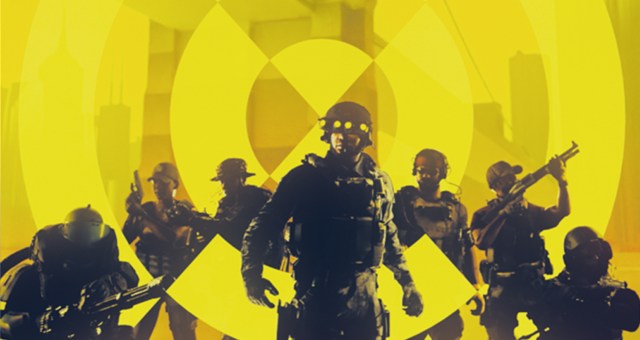
Scene cut out of an event poster. A 3D environment & actors rendered into STILL content. Be smart with your resources & deadlines.
The MOTION entry of NYSL into the CDL 2020 and the piece that set the tone & aesthetics for NYSL as a brand in the CoD space.
The difference between LIVE and NONLIVE content is essentially the shooter. Whatever we have our hands on in terms of the shooting will be considered LIVE (i.e. house tours, interviews etc.) while the rest is NONLIVE (i.e. anything that includes in-game content and assets that are already shot). These are the most complex pieces we are putting out and they require the most time and optimized process of production so that you minimize the risk of failure. Sometimes, these as well as 3D pieces take hours just to render. And then you find 1 second of black screen in the end and have to render again.
In this example you can see a variety of work we produced for NYXL. It also includes the live footage, but, since the content was shot in the past and available to the editor, we consider this piece as NONLIVE.
This video was the first in the set of ‘ORIGINS’ series. It required a script, a shooter & producer on site. Since the content was shot specifically for this video in this series, we consider this to be a LIVE content piece.
One of the biggest learnings for me over the last couple of years was that, along with having to find the right work for the right people, you as a leader in a team have to make sure you enable people to do their best work. This means that, even though someone might be the best person in their role you can find, they won’t necessarily fit in with your process of creation. At least not if you don’t make an effort of enabling them. So for my team I created a breakdown of processes for all of the above and for the sake of not overwhelming you with too much info straight away I will only show the easiest example, which is Still content, and if you’re interested to learn about the rest feel free to reach out to me.
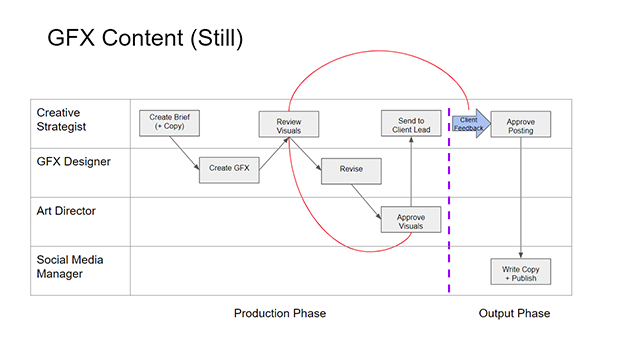
Creation process laid out like this will not only help you break down the project and have an overview of it. It will also help you figure out what team you need and what the project pipeline should look like.
This is an example which explains a process breakdown for one simple graphic, let’s say a ‘happy birthday post’. The Creative Strategist (CS) suggests the idea to our GFX team. They take their suggestion and design a post which is then reviewed by the CS in order to ensure that the core message is communicated graphically. If it doesn’t, the piece is revised until it’s good enough to present (hence the red line bouncing back from Designer to CS). The Art Director should be there to check the final product and review if everything goes in line with the brand. This is usually done only in the opening stages of onboarding the client because, after some time, you need to trust that your team will know the brand well enough in order not to drift away from initial brand guidelines.
You also want your art director to focus on high-level pieces and have their work be applied where it will matter the most (remember the core role vs support role section?). Once the piece is approved by the Art Director, it goes to the Client Lead who then presents it to the client who might be or might not be happy about it. If they are happy – good times, the piece is then posted by the SM Manager. If not, we make necessary changes and put out once the client approves (those red lines are the most interesting!).
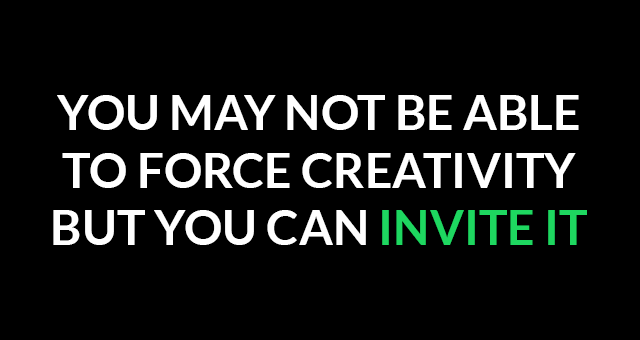
I am not a fan of forcing creativity on the fly. I give people space to figure out ‘what they want to do’, and then we jointly develop the ‘how we want to do it’ part. I never encourage my team to come up with the ideas, from scratch, of what we want to do on a call (we are scattered across multiple continents). What I do instead is – I jump on a quick call and present a short breakdown of what needs to be done. I set a direction for the work and a deadline and say ‘hey this is what we need to do by this date, let’s all come up with the ideas of what can be done and, after we are all ready, discuss on the ‘how to do it’ part on the call’. Usually the CD or CS come up with most of the ideas but then they talk to the team and then we pick what medium we will use and how the final product should look like, what is going to be the most impactful way of presenting it.
I encourage the whole team to submit their ideas, but I don’t expect them to. Instead, I always try to make them feel comfortable and do what they do best. This ensures that the content quality is at its peak because everyone enjoys what they are doing, everyone knows what they are supposed to do and by when. If you set all that together with your team, they will work towards it and won’t feel pressured. They will if you just set that for them. Give people space and listen to them, they will work infinitely better.
Thank you for taking the time to read my posts! I am happy to share more things that I've learned and you have interest in. You can subscribe to my email list below, I will be sending weekly updates about my posts. Your email won't be shared anywhere!